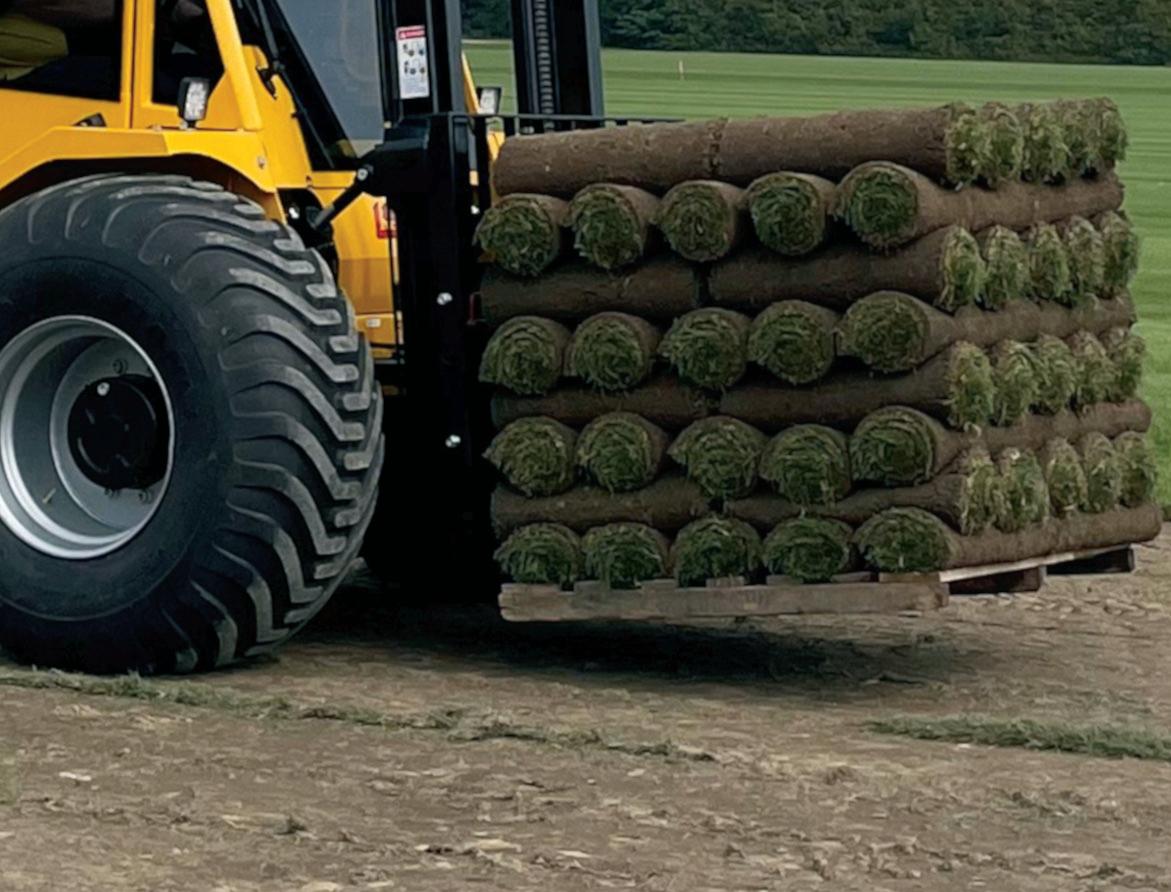
6 minute read
Rooted in Research—Sod Helps Us to Honor Our Veterans
ROOTED IN RESEARCH
SOD HELPS US TO HONOR OUR VETERANS
By Mike Fidanza, PhD
In the United States, we commemorate military service members with a federal holiday on November 11. We call it Veteran’s Day specifically for honoring those who served in the United States Armed Forces. In Europe, it is known as Armistice Day, to remember the end of World War I, which took effect on the “eleventh hour of the eleventh day of the eleventh month” in 1918. In the United Kingdom and Commonwealth member states, it is Remembrance Day, but also known as ‘Poppy Day’ based on the tradition of wearing a poppy to recall the end of hostilities of World War I and to honor those that died in service to their country.
The American Battle Monuments Commission (ABMC) is an agency of the United States government, with headquarters in Arlington, VA. With over 400 employees globally, their purpose is to administer and maintain the many permanent U.S. military cemeteries, memorials, and monuments outside of the United States. There are 26 cemeteries and 29 memorials and monuments beautifully maintained around the world. Most are located in Europe, with a few others in Central America, and Southeast Asia and the Pacific.
Approximately 140,000 U.S. military service men and women are interred at those cemeteries, with another 94,000 missing in action or lost at sea. Of note, the ABMC has an online database listing those names at each cemetery or memorial (www.abmc.gov). The motto of the ABMC is “Time will not dim the glory of their deeds.”
Recently, I was fortunate to visit the Sicily-Rome American Cemetery and Memorial (www.abmc.gov/ Sicily-Rome) in Nettuno, Italy, which is a one-hour drive from the center of Rome headed south along the coast. The property covers 77 acres (31 ha) and serves as the final resting place for American military war dead from the liberation of Sicily (July 10 - August 17, 1943), landings in Salerno (September 9, 1943) south of Naples and the heavy fighting northward, landings at nearby Anzio Beach and expansion of the beachhead (January 22 - May 25, 1944), and those involved in air and naval support in the region.
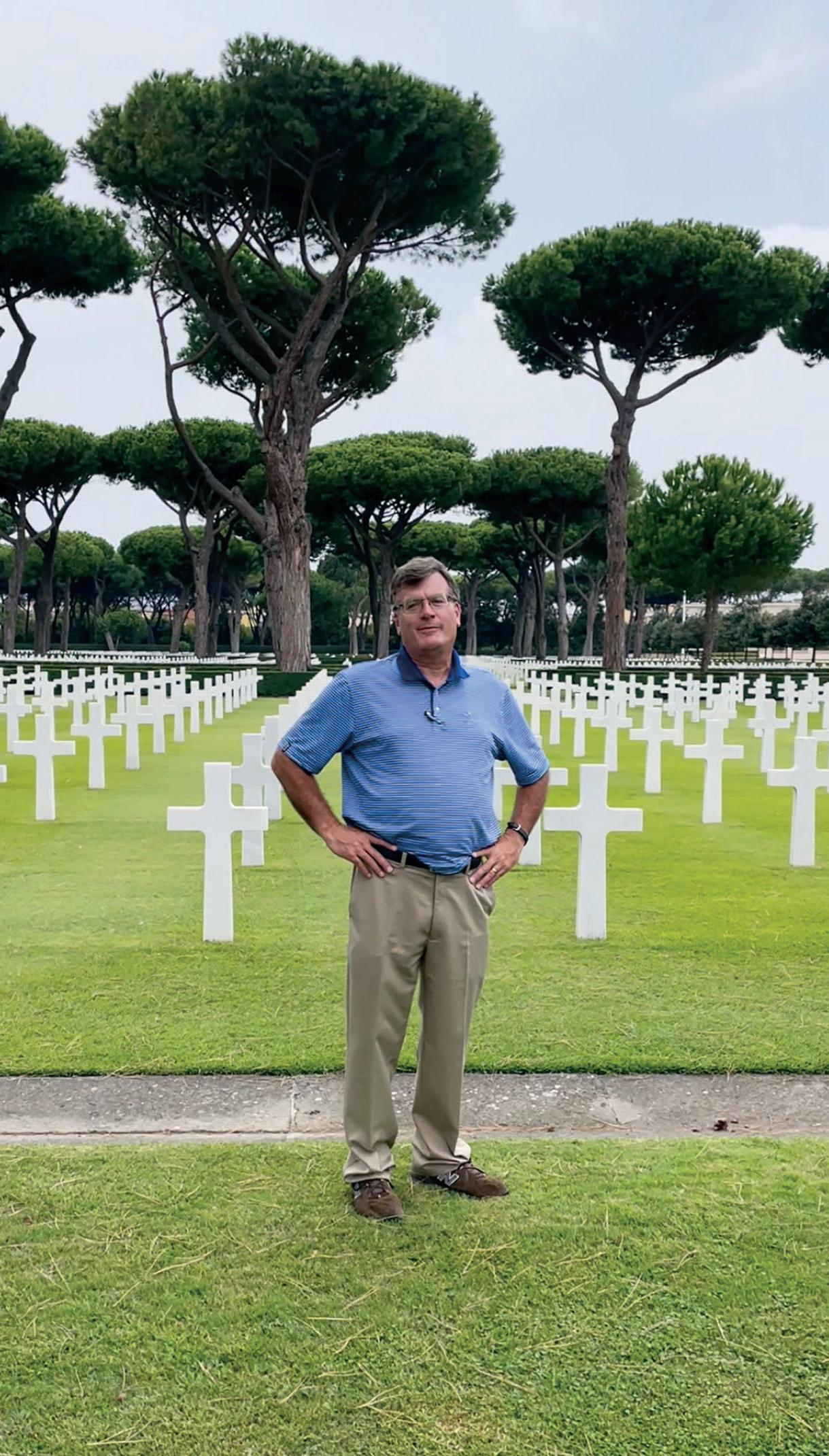
The Sicily-Rome American Cemetery and Memorial, in Nettuno, Italy, with zoysiagrass providing the comforting green cover. I can tell you from personal experience, that any problems I thought I had as I visited the cemetery that day, where insignificant compared to the sacrifice those soldiers made for America.
About five miles (3 km) nearby is the town of Anzio, and military history lists the Battle of Anzio as having taken place from January 22 to June 5, 1944. This allied invasion on Italy’s mainland was the beginning of their liberation in World War II. Incidentally, the British and Canadian war dead from that campaign are located nearby at the Commonwealth of Nations Anzio War Cemetery.
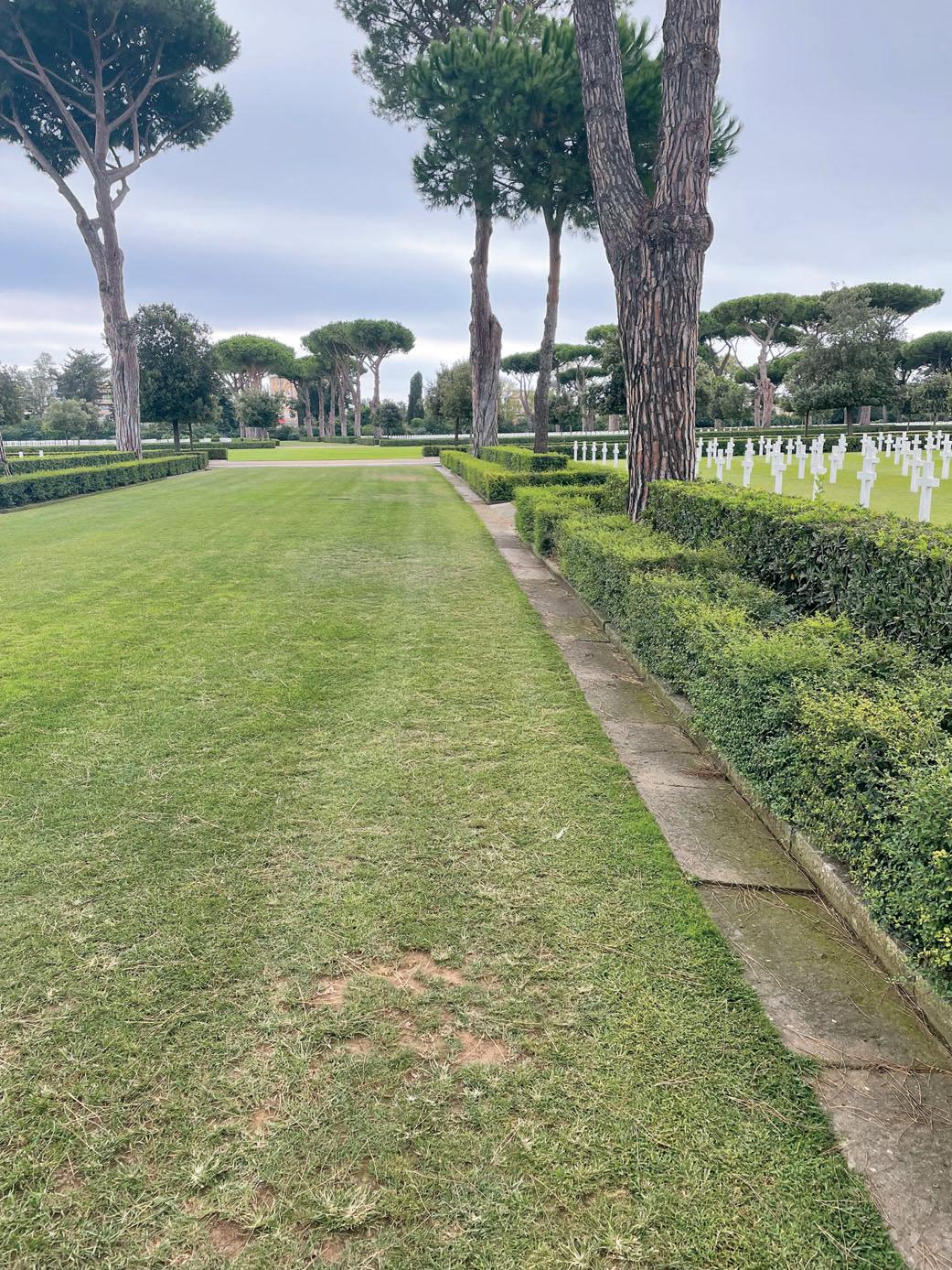
Cool-season turfgrass mixtures can struggle trying to compete with the roots of those famous Roman pines.
Tall Roman pine trees (Pinus pinea) line the grass walkways in-between the many burial sections at the Sicily-Rome Cemetery. These pines resemble an umbrella because of their top-heavy appearance, yet plenty of sunlight reaches the turfgrass. Unfortunately, over time these trees like to grow roots at the soil surface, which means a decline in the cool-season turfgrass mix, so overseeding helps.
Zoysiagrass (Zoysiagrass sp.) sod was installed within the burial sections and in the large lawn area in the center of the cemetery. Zoysiagrass provides a good solution for the cemetery because as a warm-season grass it is best adapted to the Mediterranean climate of warm, dry summers and mild winters. Zoysiagrass is also competitive against unwanted weeds, an important factor since herbicide use is limited to only glyphosate in certain situations. The zoysiagrass sod was produced by Marco Bindi of Bindi Pratopronto Nord (www.pratobindi.it), at their sod farm on the outskirts of Rome. When their sod is harvested, it is not uncommon to find small Roman coins or other artifacts in the soil, since the farm is located in an area where ancient Rome once thrived and prospered.
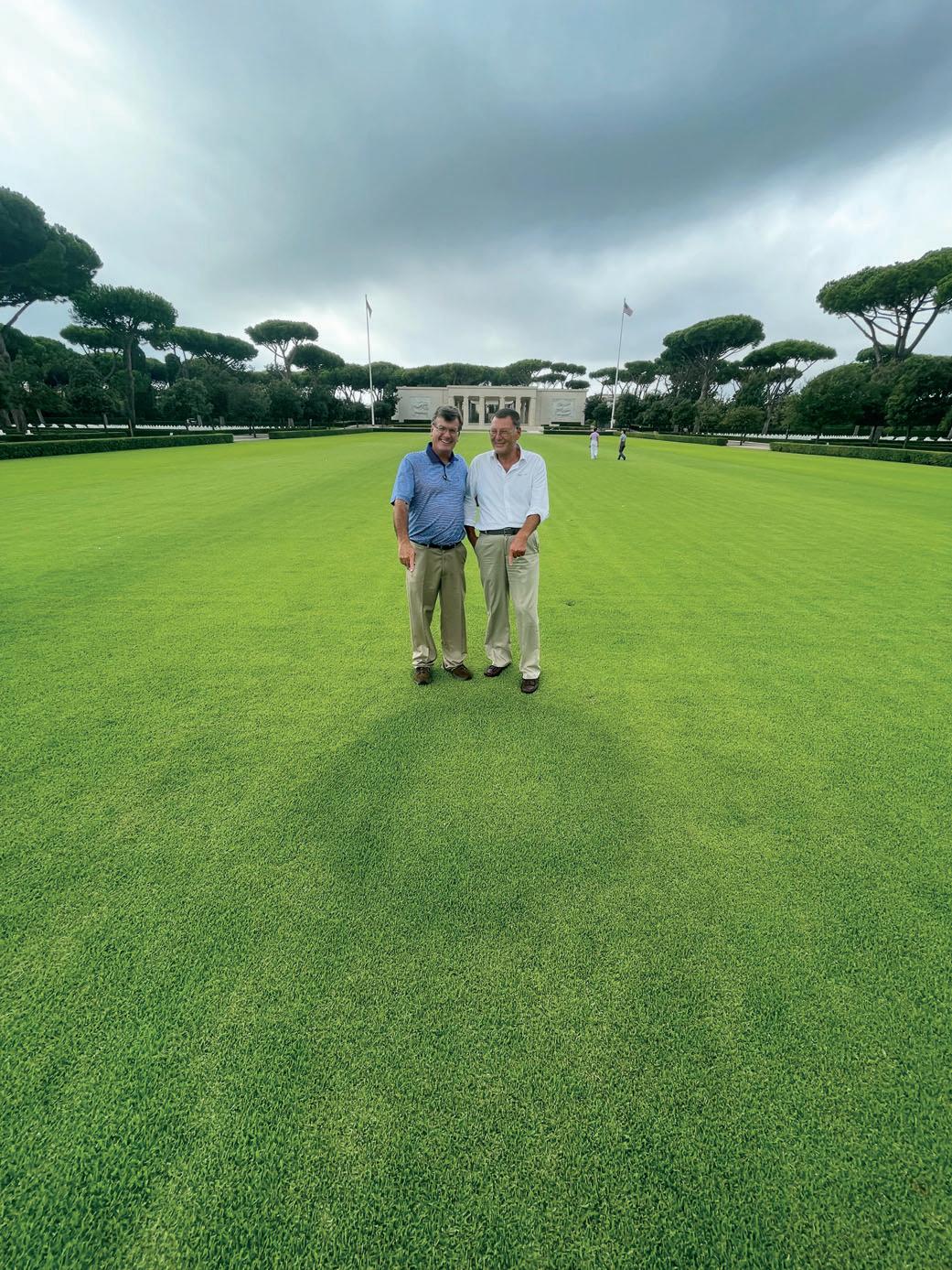
I am standing next to Giuseppe Serenelli (Herbatech SRL; Verona, Italy) as we examine the only active fairy ring on the zoysiagrass lawn. (Editor’s note: Follow Dr. Fidanza’s persistent pursuit of all things related to fairy ring #FriskyFairyRingFriday)
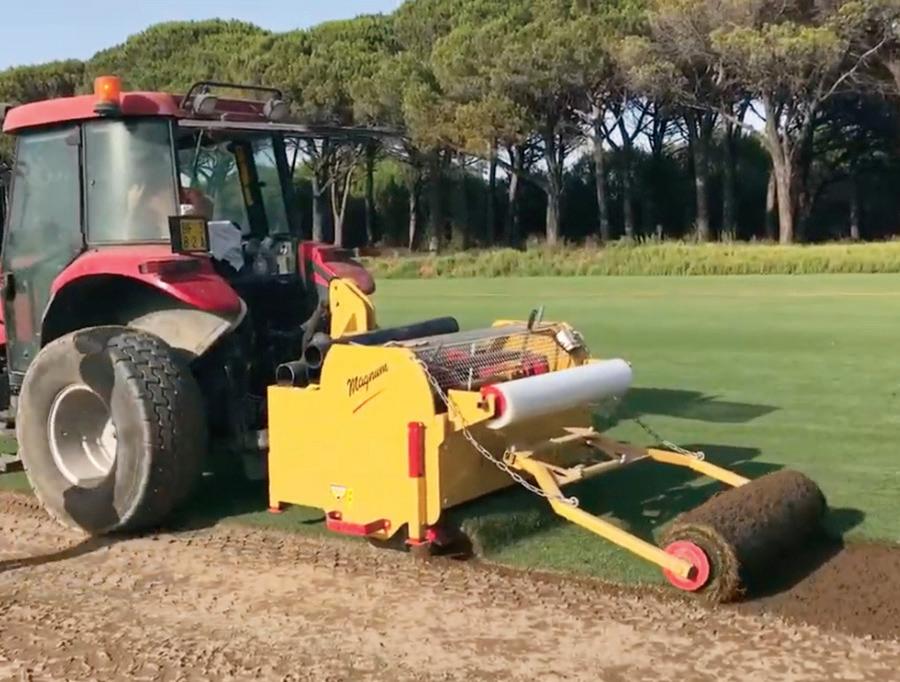
Bindi Pratopronto Nord sod farm is harvesting bermudagrass for installation at an American military cemetery in Europe.
Mélanie Resto is the superintendent at the Sicily-Rome Cemetery. She is a U.S. citizen, but all other employees (i.e., groundskeepers, mechanic, office staff) are from the local community, which is the directive of the ABMC for all their locations worldwide.
Standing there, looking upon those 8,000 graves, with another 3,000 listed on a wall as missing-in-action, you can’t help but feel humility, and gratitude, for those young and very brave soldiers who made the ultimate sacrifice. Perhaps the families of those at the Sicily-Rome Cemetery are comforted to know their loved one’s final resting place is well taken care of and represented by a green carpet of zoysiagrass. For this Veteran’s Day, and also Armistice Day and Remembrance Day, thank you to all of our brave men and women who have served, and who now currently serve, in the armed forces.
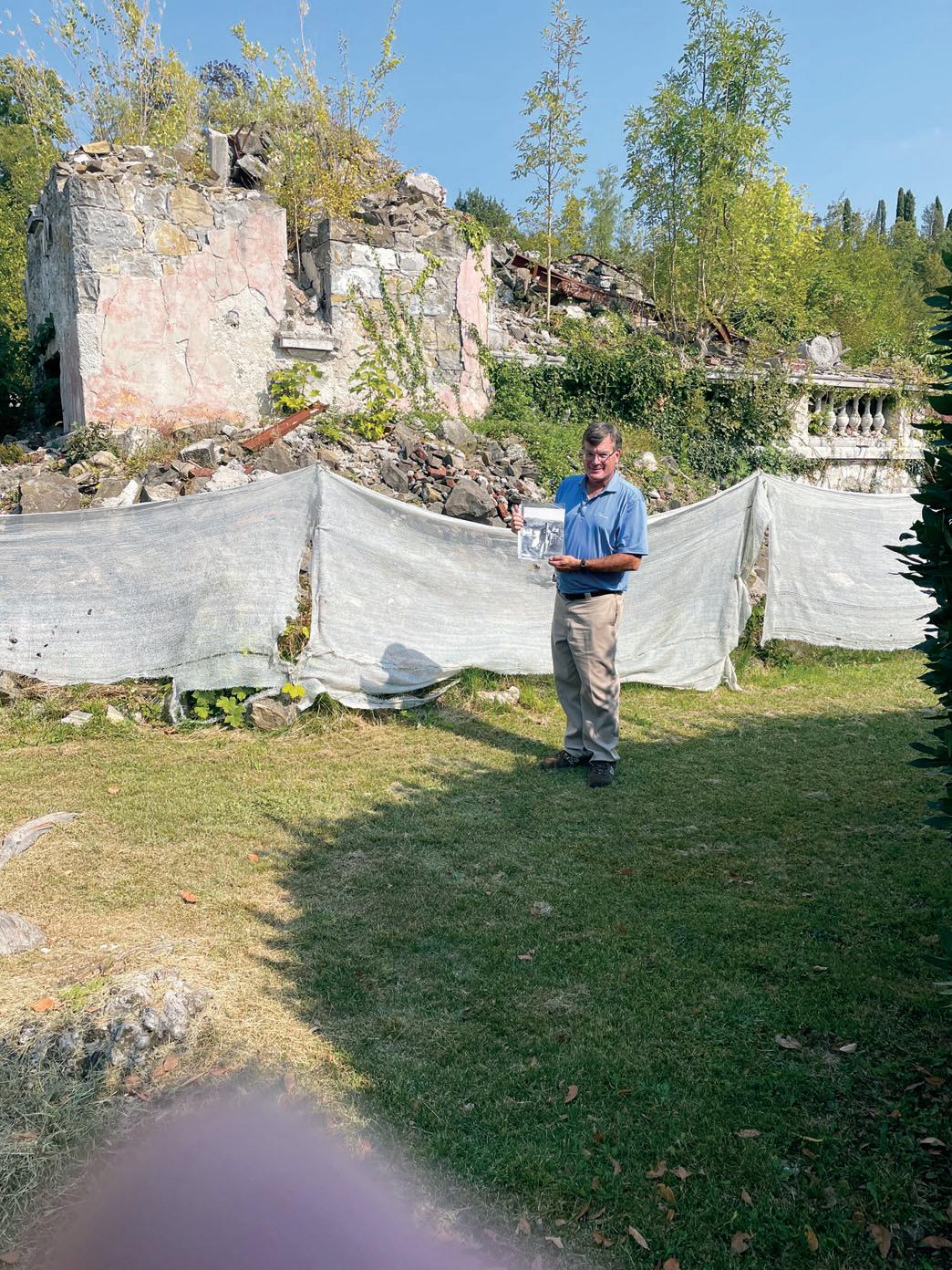
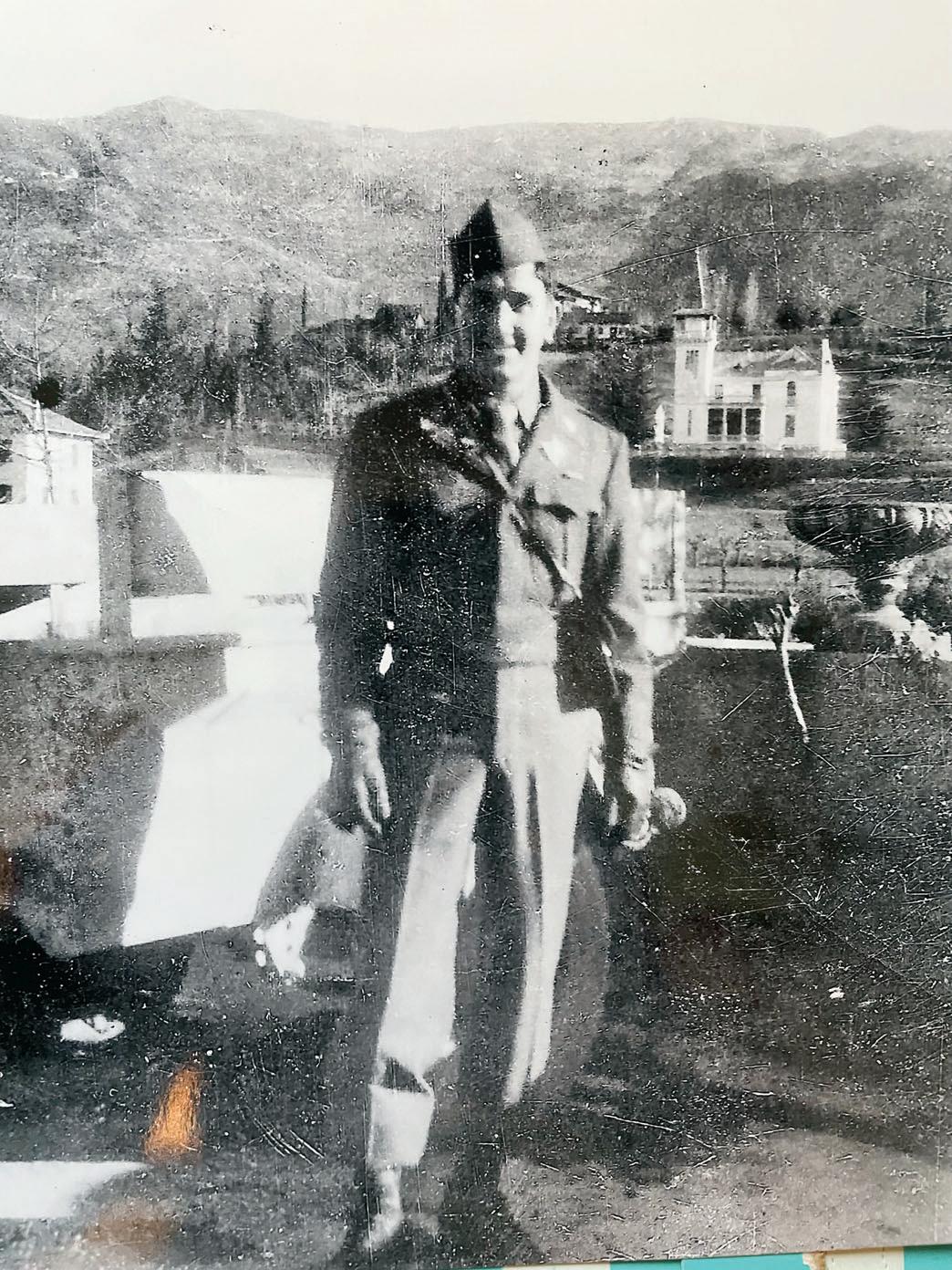
My father, Mark Fidanza, pictured here as an 18-year-old young man in the U.S. Army, with Villa Ricci in the background in Tarcento, Italy, in 1945. He is standing at a hotel which the Army converted into their local headquarters and hospital. Today is it used as a Catholic elementary school and Parish offices.
On a personal journey in Italy last year, traveling with my nephew (Marco Fidanza) as my driver, we made our way to the small town of Tarcento, located north of Venice along the northeastern corner of Italy. My father (Mark Fidanza, 1927-2014) was stationed there in 1945-46, at 18 years of age, and as a member of the U.S. 350th Infantry Regiment.
Like most World War II veterans, he never really spoke about his time in the military. He would only mention that since he spoke fluent Italian, he also served as an interpreter. So there I was, standing at exactly the same spot where my father stood approximately 76 years ago. Again, it was a day filled with emotion and gratitude.
In 2021, approximately 76 years later, I am standing in front of the ruins of Villa Ricci, holding a photo of my father (as pictured in in preceding photo). The house was severely damaged from an earthquake in 1976, and the current owners have been patiently waiting for the Italian government to pay for reconstruction of this historically important property.
Mike Fidanza, PhD, is a professor of Plant and Soil Science at Pennsylvania State University, Berks Campus. Cale Bigelow, PhD, is a professor of Turfgrass Science and Ecology in the Department of Horticulture and Landscape Architecture at Purdue University in Indiana. They are teaming to provide a Rooted in Research article for each issue of Turf News. All photos courtesy of Mike Fidanza, PhD.



